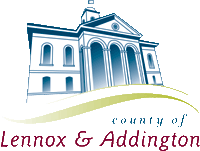
Loyalist Exiles (1784-1799)Harmen Pruyn and the Pruyn Spoons |
|||
|
|||
The Pruyn Spoons, crafted c.1758 |
Harmen Pruyn, a sloop master, was engaged in the grain and freighting business at New York. He is reputed to have had considerable means. Harmen married Jannetje Goes (or Hoes) in 1758. DISCOVER MORE![]()
The spoons, likely part of a larger set acquired at this time, were engraved, in the tradition of the 18th century, with Harmen's initials, "H*P" as the male head of the household.
The punch mark on the reverse side of the lower handle is "PDR". Measurements for the two spoons vary slightly: on the one spoon, the handle is 12.9 cm. long and the bowl is 7 cm. x 4.2 cm.; on the other spoons, the handle is 13. 2cm. long and the bowl is 6.8 cm. x 4.1 cm. The bowl and handle are joined by a weld. The size would seem to classify these spoons as 'eating' tablespoons used for drinking soup, although there is considerable debates among collectors about the size distinction between serving spoons and tablespoons in the 18th century.
The punch mark "PDR" on the reverse of the handles was used by silversmith, Petrus De Reimer (1739-1834), born in New York City. About 1752, Petrus De Reimer apprenticed to Nicholas Roosevelt in New York City. He worked from after 1759 to 1795 as a silversmith in New York City and from 1796 to 1809, in Poughkeepsie, New York.
In 1776, Harmen was residing at Kinderhook. According to a Bible entry, "Harmen Pruyn was banished from Kinderhook, 1777." During the Revolutionary War, Harmen sided with the British, joining on Long Island. Family tradition relates that his store was broken into and grain was taken to feed the horses of Colonel Hoes. Another family story indicates that the "spoons were hidden in the sugar barrel when the American soldiers came and that a ladle, too large to hide, was taken by the soldiers."
Ten years later, Harmen again appears at Kinderhook as an Elder in the Dutch Church but disappeared from the list by 1792. This latter date likely correlates with his move to Upper Canada where he was granted land at Bath. His son Matthew had been in Upper Canada since 1790. In 1799, his daughter, Maria, married Stephen Fairfield, a son of William Fairfield whose home is now preserved as The Fairfield House at Amherstview. Fairfield family tradition relates that the Dutch Loyalist, Harmen had numerous slaves and that Marie was given ten as her dowry when she married Stephen. These spoons, however, appear to have passed to Maria's brother, Francis, whose daughter, Jane, married Martin Fisk, at Ernestown in 1815.
© Lennox & Addington County Museum & Archives
97 Thomas Street East, Napanee, Ontario, Canada K7R 4B9
Funding provided by the Government of Ontario and the County of Lennox & Addington



